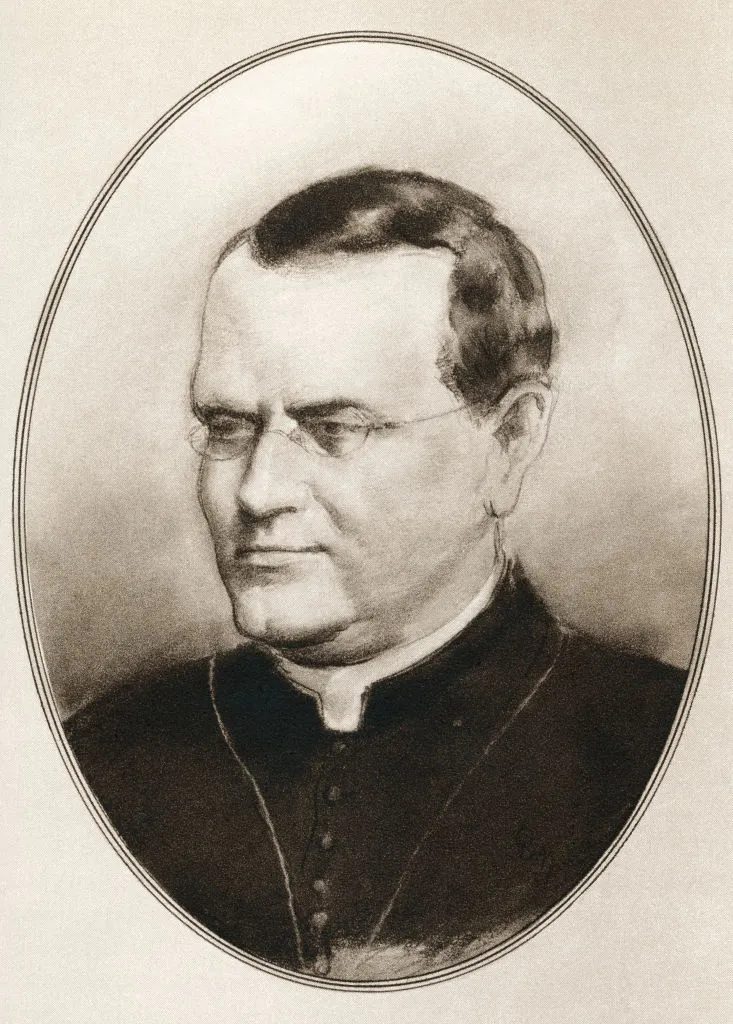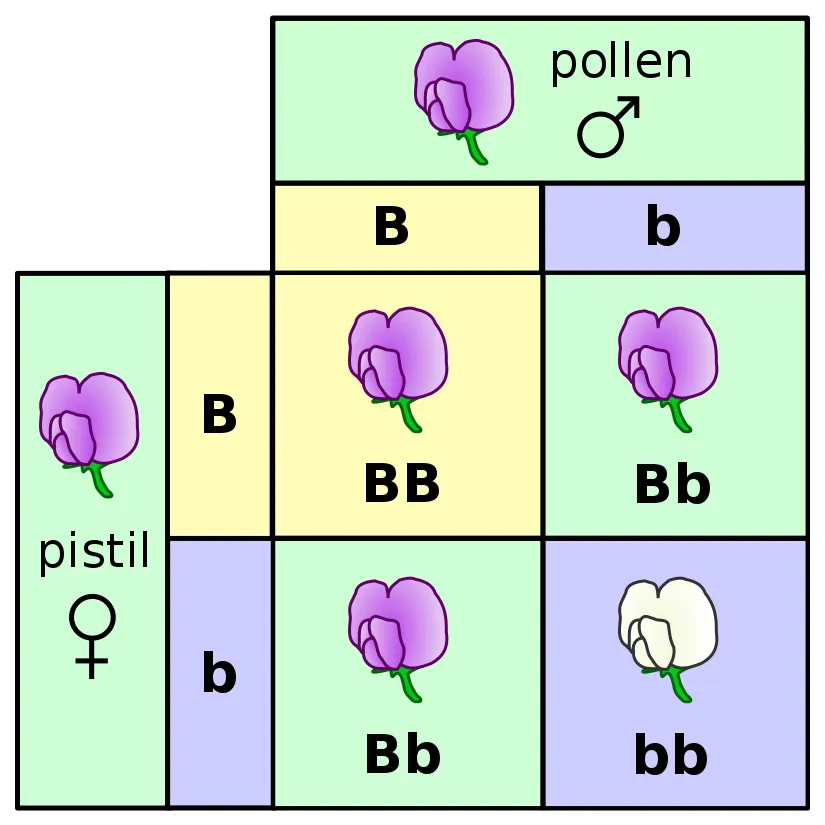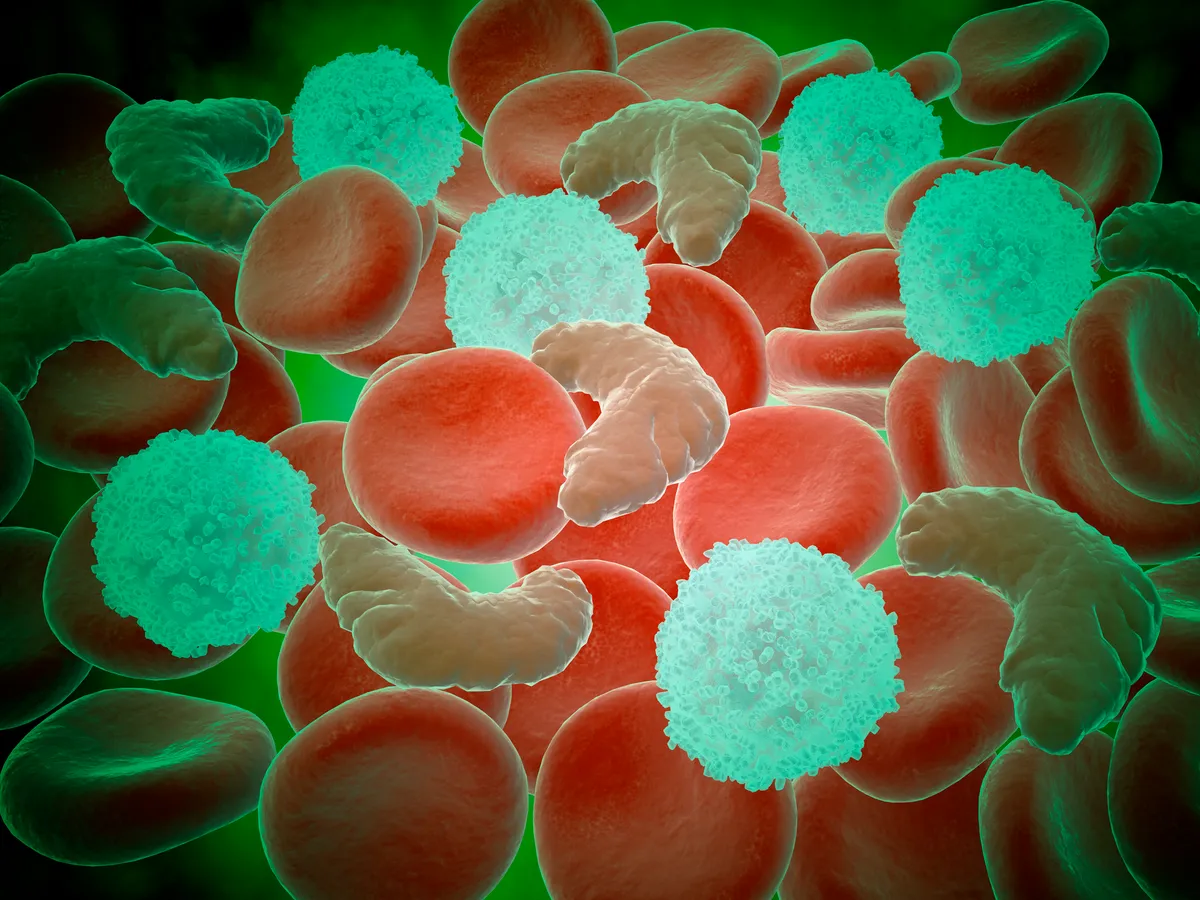What is a phenotype?
Any observable characteristic or combination of traits – not just something like colour or behaviour, but features you can’t easily see, such as physiology – are known as an organism’s phenotype.
These features are a product of genes and influenced by the environment – so a phenotype is the physical manifestation of genetic instructions.
More by JV Chamary
What is a genotype?
The genotype is the combination of genes that produces a particular phenotype. When an individual inherits one copy of a gene from its mother and one from its father, those two copies are either distinct genetic variants (alleles) or the same.
Two variants will differ in their DNA sequence, but the distinction between them is traditionally represented by capital and lowercase versions of a letter.

A classic example comes from Gregor Mendel – a 19th-century monk and father of genetics – who studied flower colour as part of his breeding experiments in pea plants. From a single gene with two variants, ‘A’ and ‘a’, a copy from each parent gives four possible genotypes: AA, Aa, aA, aa.
By crossing two pure-bred parents – one with white flowers, the other purple – Mendel showed that offspring had purple flowers if they carried the dominant ‘A’ variant of a gene, but had to inherit both copies as the ‘a’ (recessive) variant to end-up with the white phenotype. That study inspired the concept of ‘dominance’, one of Mendel’s laws of inheritance.
A Punnett square (see below) is a good way to illustrate this interaction between the variants (alleles). This diagram was devised by Reginald C. Punnett in 1905, and named after him. In the pea example below, two variants are used and create a two-by-two square with the results, however it is possible to add more in variants which increases the size of the square and adds in more possible results.

Does the genotype determine the phenotype?
Sometimes, but be wary of ‘genetic determinism’! That’s the belief that traits are caused by genetics alone. It’s important to note that many phenotypes aren’t simply ‘monogenic’ traits dictated by a single gene, as phenotypes can also be ‘polygenic’ traits that depend on multiple genes.
Saying that genes determine traits is a convenient shorthand, and one genotype can actually produce a variety of different phenotypes.
Learn more about genetics and evolution:
Why might a phenotype not reflect its genotype?
Because the link between them can be influenced by environmental factors, such as a habitat’s resources or how an individual is raised. If you’re not careful, that idea can lead you to believe that traits are determined by either genes or the environment – nature or nurture, which is another common misconception.
Variation in phenotypes exist because genes aren’t isolated from other factors that cause ‘gene-by-environment’ interactions. Think of twins with identical genotypes for the potential to grow muscle: only the one who lifts weights ends up with a muscular body. So a phenotype is the result of nature via nurture.
How do phenotypes affect evolution?
A genotype is often invisible to natural selection because variants are hidden behind environmental factors or a genetic phenomenon like dominance.
That means ‘survival of the fittest’ actually occurs between individuals according to their visible phenotype. Because only survivors pass genes to the next generation, an organism’s genotype survives by being dragged along with its phenotype.
That effect explains why harmful genetic variants (‘bad mutations’) can persist in a population’s gene pool over time. For example, with sickle-cell anaemia, people who inherit two copies of a defective gene have abnormal haemoglobin and short-lived, crescent-shaped red blood cells.

Carrying just one copy causes ‘sickle-cell trait’, where a person will carry the abnormal variant (and may pass it on to their children), yet won’t suffer from disease.
Although affected individuals are less likely to survive and reproduce, the variant survives in places where malaria is endemic because the parasite is less able to infect people with sickle-cell phenotypes.
What is the ‘extended phenotype’?
It’s a concept proposed by the evolutionary biologist and author Richard Dawkins, who argued that a gene’s effect can extend beyond the body to produce phenotypes in an organism’s surroundings.
Humans are an obvious case, because we create structures such as buildings and roads, but in his book, The Extended Phenotype, Dawkins presented the example of a beaver’s dam – an artificial structure that the animal makes through planning and dexterity, which is ultimately determined by its genes.






